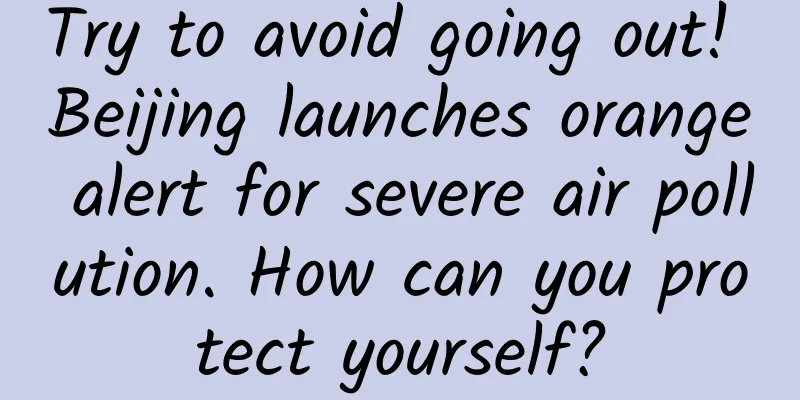Will new energy vehicles face a second round of crackdowns?

|
On June 23, China Machinery Rolling Stock Technical Service Center released a "Notice on the Suspension of Some Vehicle Types in the Announcement" on its official website. The notice shows that 2380 new energy buses are planned to be suspended in the 297th batch of the "Announcement" because they failed to submit the "Electric Bus Safety Technical Conditions" test report. According to the reporter's statistics, a total of 109 new energy bus companies were involved, covering almost all domestic new energy bus manufacturers. Among them, as many as 7 companies had more than 100 models announced to be suspended. Nanjing Jinlong had the most, with 249 models announced to be suspended; followed by Suzhou Jinlong, with 173 models announced to be suspended; Xiamen Jinlong had 164 models announced to be suspended. There are 4 other companies: Yutong Bus 120 models; Yangzhou Asiastar Bus 116 models; Ankai Bus 109 models; Zhongtong Bus 104 models. This means that if the companies involved cannot submit the "Electric Bus Safety Technical Conditions" test report on time, then these 2,380 new energy buses will not be able to be sold. On the same day, the National Audit Office released the "State Council's Audit Report on the Implementation of the Central Budget and Other Fiscal Revenues and Expenditures in 2016", which directly pointed out the problems in the promotion of new energy vehicles. It disclosed that the subsidy standards for new energy vehicles were too high and that new energy vehicles and charging piles were idle. The report pointed out that the audit sampled 6,801 new energy vehicles that enjoyed fiscal subsidies from 13 automobile manufacturers and found that 3,511 electric buses received subsidies exceeding 70% of the sales price of the single vehicle, and the subsidy standard was too high; some automobile manufacturers designed and produced vehicles with the subsidy policy in mind, and some companies even obtained subsidies of 1.672 billion yuan through related transactions or fraud. In addition, as of the end of February 2017, among the 35,500 new energy vehicles purchased by 16 companies (10 of which were car rental companies) audited, 2,200 had been idle for more than a year, and 17,200 had an annual mileage of less than 3,000 kilometers; among the 66 new energy vehicle manufacturers in the extended investigation, 30 had sales of less than 500 vehicles in 2016; and the construction of charging infrastructure in some places is lagging behind and standards are not unified. It is worth noting that the report emphasizes that some automobile production and sales companies have obtained financial subsidies of up to 1.672 billion yuan by means of self-production and self-purchase, supplying batteries and buying back complete vehicles. Some media reports pointed out that in fact, this figure is almost half of the provincial matching funds (3.546 billion yuan) arranged by eight provinces from 2015 to 2016. If we go back a few days, there is another thing that has attracted great attention in the new energy vehicle circle, that is, the "30,000 kilometers" policy requirement that has troubled many car companies is expected to be adjusted to 10,000 to 30,000 kilometers. According to the reporter's understanding from informed sources, the China Association of Automobile Manufacturers has submitted a policy adjustment proposal to the Ministry of Industry and Information Technology, suggesting that the previous mileage requirement be adjusted from the policy requirement of "new energy vehicles purchased by non-individual users to apply for subsidies, the cumulative mileage must reach 30,000 kilometers (excluding special-purpose vehicles for operations)" to a tiered requirement based on vehicle type and purpose. Specifically, the adjustment is as follows: the mileage requirement for new energy passenger vehicles for leasing purposes is reduced to 10,000 kilometers, and the mileage requirement for new energy taxis remains at 30,000 kilometers; in the field of buses, the mileage requirement for new energy long-distance passenger vehicles and public buses remains unchanged at 30,000 kilometers, but the mileage requirement for commuting buses is reduced to 10,000 kilometers; the mileage requirement for new energy logistics vehicles is adjusted to 10,000 kilometers. Although the final result of the adjustment is still unknown, policy adjustments seem to have become inevitable. Earlier, Liu Feng, deputy director of the Resources and Environment Department of the National Audit Office, said in an interview with the media that as the scale of the industry increases rapidly, some issues need to be paid attention to. In response to various situations of new energy vehicles, relevant departments have begun to take measures to improve relevant policies. In just a few days, many national departments have emphasized new energy vehicles, which has made people vigilant. It is undeniable that from the perspectives of continued strict emission requirements for traditional vehicles, environmental protection, and China's energy security, new energy vehicles have irreplaceable advantages in terms of economy and environmental protection. The pressure brought by policy adjustments may not be a force that forces companies to change their development paths. Judging from the above changes, the national policy on new energy vehicles has a tendency to be gradually tightened. After the subsidy fraud incident, the country has not changed the overall plan for new energy vehicles, but has become more cautious and strict in details. The announcement of the planned cancellation of 2,380 new energy passenger car models is an unprecedented move. Therefore, it seems not impossible to continue to launch a second crackdown on the new energy vehicle industry. It should be noted that after the great waves, only enterprises with innovation capabilities, core technologies and brand effects can truly gain a foothold in the market and truly promote the healthy development of the new energy vehicle industry. As a winner of Toutiao's Qingyun Plan and Baijiahao's Bai+ Plan, the 2019 Baidu Digital Author of the Year, the Baijiahao's Most Popular Author in the Technology Field, the 2019 Sogou Technology and Culture Author, and the 2021 Baijiahao Quarterly Influential Creator, he has won many awards, including the 2013 Sohu Best Industry Media Person, the 2015 China New Media Entrepreneurship Competition Beijing Third Place, the 2015 Guangmang Experience Award, the 2015 China New Media Entrepreneurship Competition Finals Third Place, and the 2018 Baidu Dynamic Annual Powerful Celebrity. |
<<: What you don’t know about the THAAD system is more harmful than a chip!
>>: Takata expresses condolences to victims, but restructuring plan favors automakers
Recommend
What happened when Beijing issued the blue high temperature warning signal? What is the high temperature in Beijing?
Beijing issues blue warning for high temperature ...
The secret weapon of operational optimization: Re-understand the power of heat maps! (Down)
Last time, we introduced: 1. Key indicators relat...
Tesla terminated its contract with self-driving technology company and will no longer update related hardware
Recently, news about Tesla's self-driving car...
Douyin Enterprise Certification Review Standard Guide!
Douyin's "Enterprise Certification"...
Activity plan operation process template
This template has a certain scope of application ...
Airbnb’s Growth Case Study
Airbnb, Chinese name:爱Airbnb , is a service websi...
In information flow promotion, how can you let users quickly understand your product? Just 2 steps!
When users are unable to fully understand the pro...
WeChat mini program function of milk tea shop, how to set up WeChat mini program of milk tea shop?
After the Qingming Festival, the temperature bega...
How to use JD E-card?
1. Use JD E-card can only be used to purchase pro...
My Map Navigation
Source code introduction Based on Baidu LBS, real...
Special: During National Day, go visit a museum!
Some people say To understand a city The vegetabl...
You eat fruits to whiten your skin, but end up getting darker?
Audit expert: Wang Guoyi Postdoctoral fellow in N...
Zhang Haiyin's 50 case videos: "All the cases you want to hear are here"
Zhang Haiyin's 50 case videos "All the c...
To be honest, before becoming pets, guinea pigs were actually food...
Many zoos and farms in Japan have a program calle...
"Venus and the Moon" will soon reappear in the sky. Remember to watch this "Star and Moon Myth" tonight~
Xinhua News Agency, Tianjin, December 3 (Reporter...









